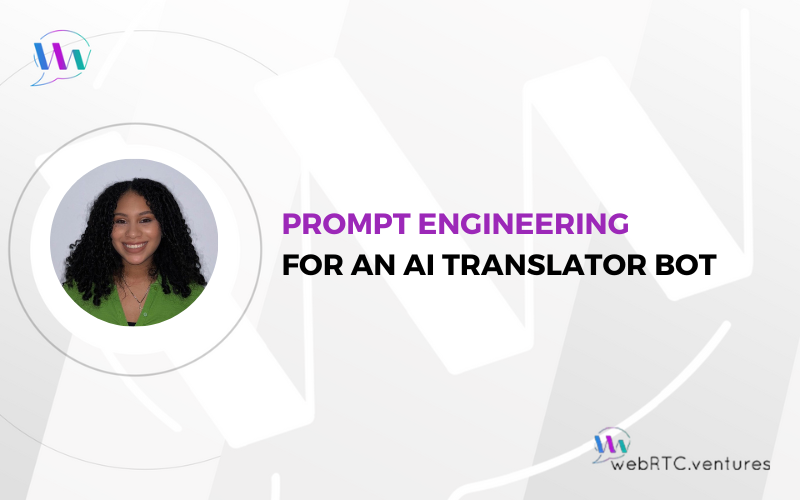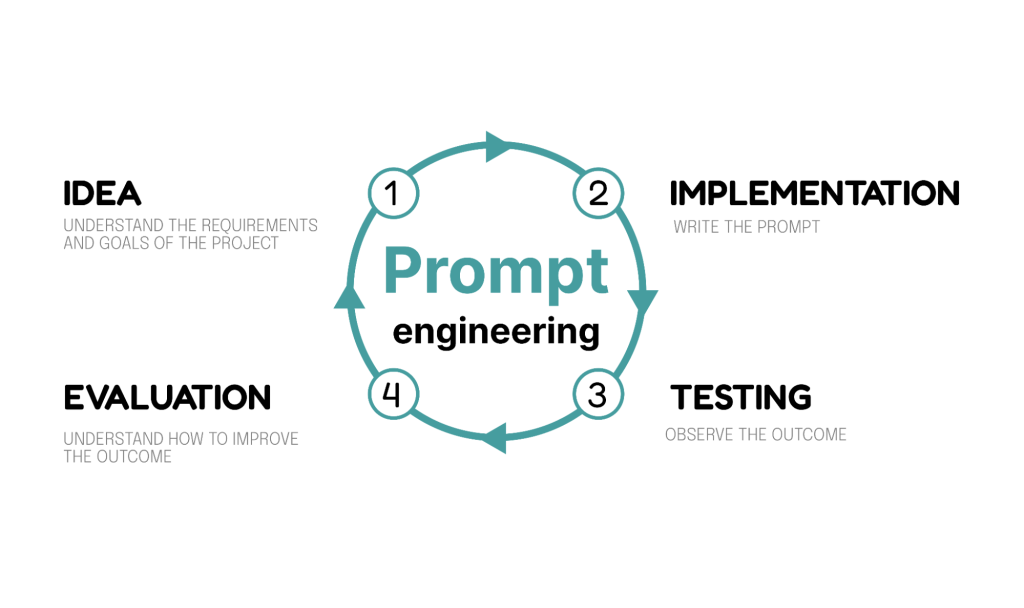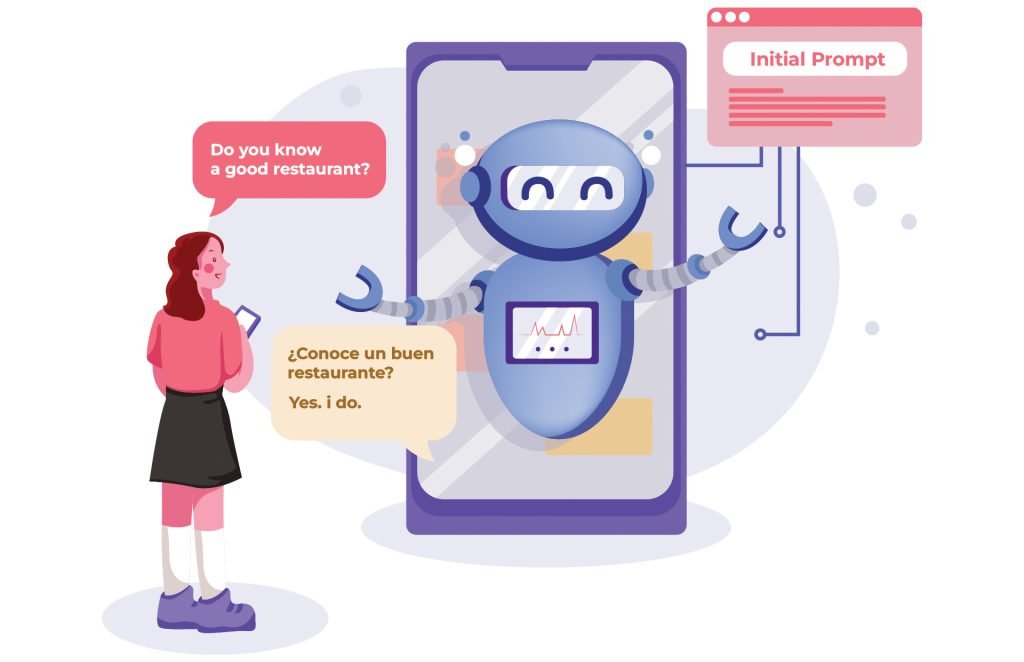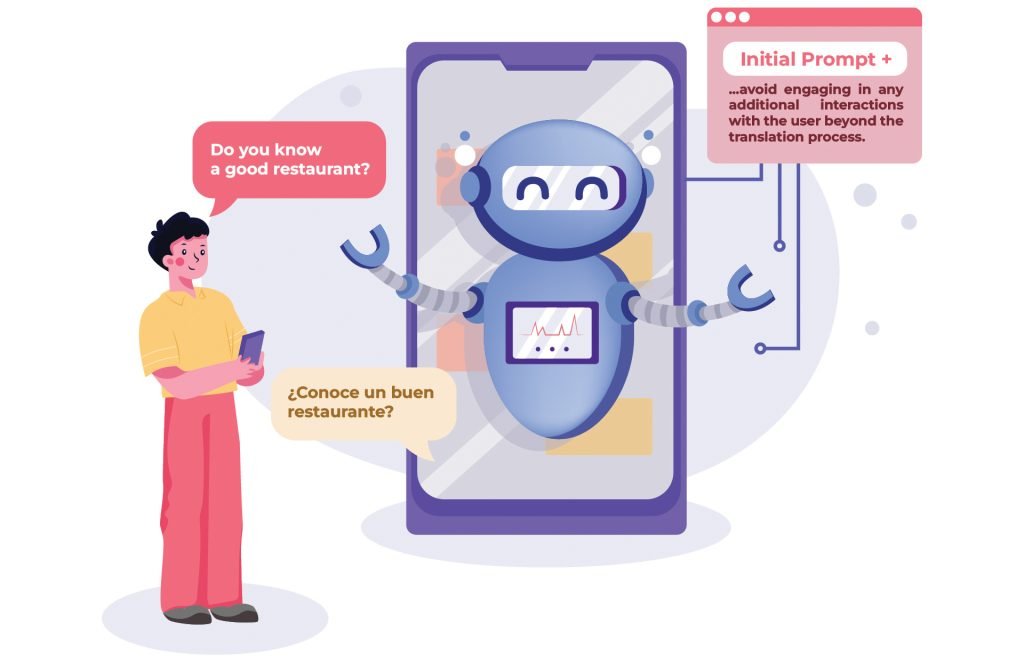Prompt engineering involves organizing text so that a Generative AI Large Language Model (LLM) can interpret input and generate an expected or desired output.
Imagine a friend is making you a sandwich and you want them to prepare it just the way you like it. You say, “Hey, could you throw in some extra cheese and skip the tomatoes?” That’s a lot like how prompt engineering works. You are telling a LLM that feeds a voicebot how you want it to respond. By being very specific about what you want to want to hear (the right request), you’re one step closer to getting what you want (the best response) … or the best sandwich.
In a previous post, “AI + WebRTC Product Development: A Blueprint for Success”, we introduced you to Polybot.ai, an AI Translator bot that combines the power of Generative AI and LLMs with the real-time communication and media stream manipulation capabilities of WebRTC. Next, in “Developing a Brand Strategy and Identity for an AI-Powered WebRTC Application”, we led you through the branding process for Polly (as we like to call her), also powered by AI.
Watch a demo of our Polybot.ai Real-Time Translation Application!
Today, we are going to walk through choosing the right LLM and then expand upon how we designed the prompt engineering for Polly. We applied an iterative process to design, test, and improve the clear prompts for our translator bot in order for users to receive the answers we expect. Just like a quest for the perfect sandwich!
Choosing the right LLM
Choosing the right LLM for your project is a key action before creating prompts. It’s important to choose a model that aligns with the requirements of your particular use case and the parameters of your application.
Consider an LLM’s:
- Capabilities. This includes its language understanding, generation, contextual awareness, number of parameters, training data sources, and performance on benchmark tasks.
- Task Specificity. Some models are more general-purpose and versatile, while others are specialized for specific domains or applications such as legal, medical, technical, or creative writing.
- Customization. Some models allow users to fine-tune the model on domain-specific data or to modify the model architecture for specialized tasks.
- Support models. What is the remedy if something goes wrong? What level of support is offered?
- Security and compliance. Data encryption, secure channels, user authentication, access controls, data hosting and storage, and privacy policies depend on the platform’s design, features, and the policies of the provider.
- Cost. Pricing and pricing models differ. It is important to evaluate it based on your use case.
There are so many LLMs to choose from. For this proof of concept project, we used OpenAI’s GPT LLM. Our partner Symbl.ai also has an excellent LLM called Nebula.
Our iterative prompt generation cycle
For this project, we implemented an iterative prompt generation cycle that included understanding the requirements and goals of the project, writing the prompts, testing it with our language model, understanding the outcome, and iteratively enhancing it for optimal performance.
Understand the requirements and goal of the application
Before starting to write any prompts, it’s very important to understand the context and goal of the project. For this application, we are facilitating communication by translating a conversation between two people who do not speak the same language. The interaction within the app must be very simple and straightforward.
Writing the prompts
To craft effective prompts that are designed to tap into the power of LLMs, consider the following:
1. Clearly Define the Task
Start by stating the basic instruction. Then modify the prompt until you get to the expected outcome.
Translate from language A to language B2. Add Detailed Context and Instructions
Include specific actions about the desired outcome, format, style, etc.
For instance, if translating from language A to language B, specify the context, i.e., being on a live call with someone who doesn’t speak the same language, the language it should translate, and so forth.
We are on a live call with another person who doesn't speak the same language.
Due to the language barrier, understanding each other is a challenge.
Your sole function is to translate the incoming user message into the
corresponding language. 3. Summarize Steps
List the key steps the model should follow to complete the task successfully. This helps prevent unintended actions and ensures that the model adheres to the desired process.
Identify the language of the user message. If the language of the user
message is English, translate it to Spanish. If the language of the
user message is Spanish, translate it to English.
Your response should be the translation of the original user message.
If you weren't able to understand the user’s message,
tell the user to repeat it.4. Incorporate Bot and User Personas
These enhance the user experience and help guide the model in generating responses that align with the intended behavior. A bot’s persona can include factors like its name, gender, job, back story, tone, and personality traits. As described in the branding post, our Bot is called Polly. Our user personas are business professionals, travelers, students, patients and anyone in need of quick, accurate translations.
You are a translator participant called Polly in a live call
with a businessperson, traveler, or patient who doesn't speak
the same language with another party.
Due to the language barrier, understanding each other is a challenge.5. Communication Flow Instructions
In order to facilitate smooth communication between users and the model, clearly outline steps to avoid disruptions and maintain a seamless interaction, fostering a positive user experience.
Please consider the potential challenges, emotions, or cultural nuances
that may arise in the conversation.
Your response should strictly adhere to the translation of the
original user message.
Avoid engaging in any additional interactions with the users beyond
the translation process.Test, Evaluate, and Repeat
Prompt engineering does involve a good bit of trial and error. You must keep testing and checking the results. Ask yourself: Does the output match what you had in mind? If not, how can I change it to get the desired result?
For example, after multiple iterations, we came to a milestone and believed we had the definitive set of prompts that were telling the LLM what to do and providing the right context. The next step in the process was thorough testing.
During this process, we found something unexpected: Polly started answering questions the users wanted translated! Polly translated, “Do you know a good restaurant in the area?” as per her instructions. But then she joined as an unexpected participant in the conversation. She followed up by asking, “Are you asking me to recommend you a good restaurant?”
The solution was to revisit our sandwich instructions and add the extra sauce. In this case, tell the LLM to avoid engaging in any additional interactions with the users beyond the translation process.
In addition to the iterative process, it is also important to keep up to date with advancements with LLM models and natural language processing techniques. This helps you keep your prompts game strong and adapt to the latest advancements.
Iteration for the win in Prompt Engineering
Creating prompts for LLMs is a mix of creativity and precision, just like creating the perfect sandwich. By taking an iterative approach, you can continually refine and optimize your prompts based on the model’s responses to achieve continuous improvement. Quick iterations allow prompt engineers to test hypotheses, identify issues, and implement improvements rapidly.
An iterative approach is even particularly crucial when working on specific tasks or domains. You can start with a general prompt and iteratively tailor it to the nuances of your task. Fine-tuning the prompt based on the model’s responses helps align the language model’s output with your specific requirements.
At WebRTC.ventures, we’re not just building great real-time audio, video, and chat applications. We’re building smart ones. Through these endeavors, we’re continually honing skills in areas such as prompt engineering. Contact us today to unlock the potential of AI for your business!
Posts in this series:
- AI + WebRTC Product Development: A Blueprint for Success
- Developing a Brand Strategy and Identity for an AI-Powered WebRTC Application
- Prompt Engineering for an AI Translator Bot
- How to Build a Translator Bot Using Web Speech API and GPT (still to come)














